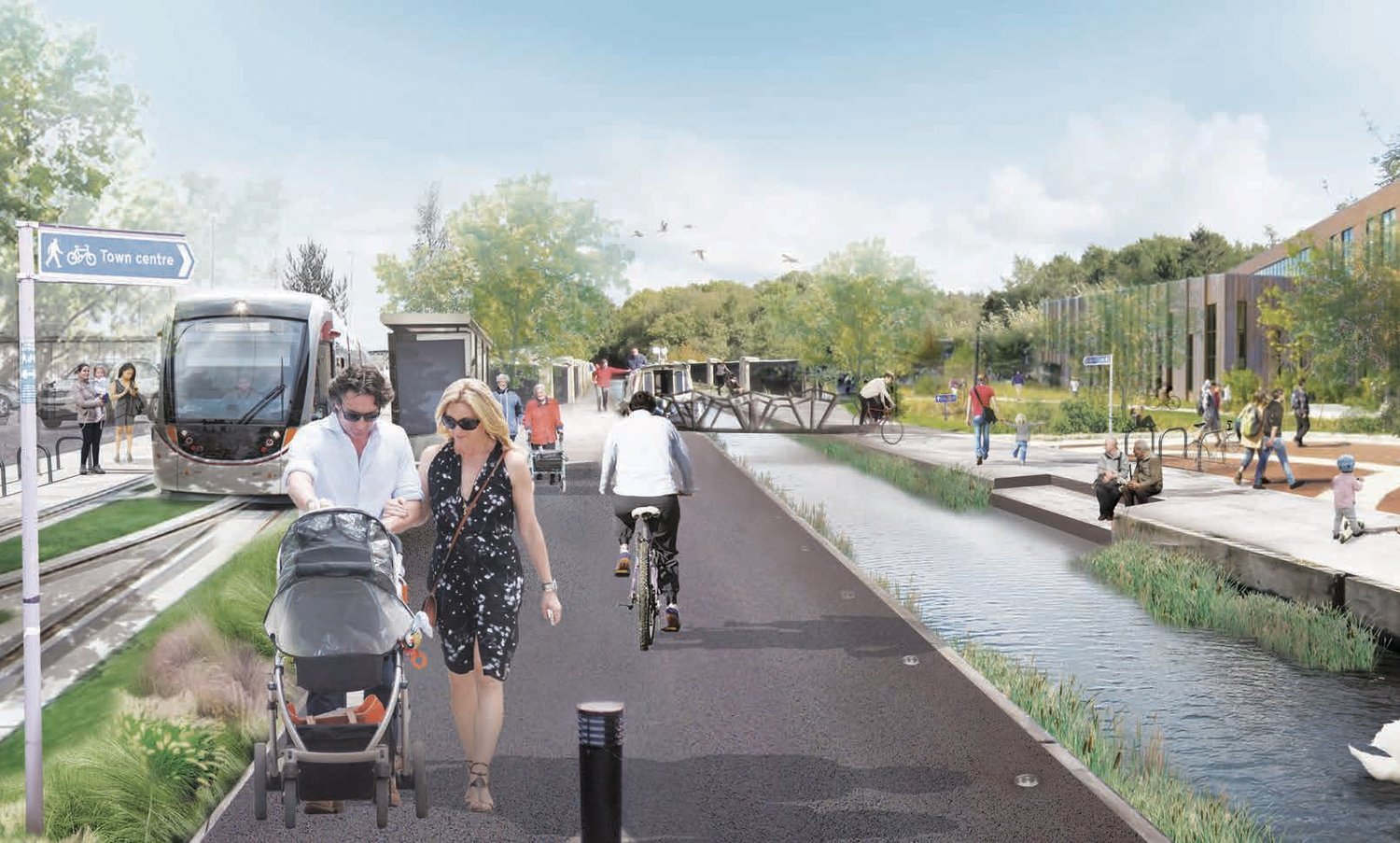
Green active travel routes create attractive places and journeys for people but also improve the environment. Jenny led a team at Here+Now to research and produce a series of 5 exemplar green active travel route case studies for client CSGNT (Green Action Trust) with insights from both delivery project managers and route end-users.
Launched at the CSGN’s annual conference, the case studies aimed to inspire and share key learnings about routes promoting cycling, walking, and green infrastructure.

Green active travel routes create attractive places and journeys for people but also improve the environment. They are about a deliberate choice to combine natural planting and/or water systems together with paths for people on foot or bike.
By combining these two elements you get a range of benefits. From environmental improvements such as increased habitat and biodiversity to improved health and wellbeing for people. The idea behind the case studies was to present a number of exemplar green active travel routes from around the world as inspiring case studies of what can be achieved using this approach, and the lessons that can be learned.
The case studies highlight the fact that each green active travel route is different. What is achievable varies dependent on location, context, budget, political support, and the range of potential partners for that locality. So the final case studies chosen were intended to give a flavour of what can be achieved - as both inspiration and to provide key learnings for others aspiring to implement their own green active travel routes. This suite of case studies includes projects at a variety of different scales and set within different contexts worldwide. They include green active travel routes that have been recently implemented or improved, retrofitted or newly planned.
As part of this process, together with the Steering Group, we established that there are 3 main types of Green Active Travel route. These are either retrofitted or newly planned. Where they have been retrofitted, the starting condition is either an existing piece of green infrastructure, which then has an active travel route added to it, or an existing active route, which then has green infrastructure added to it. Alternatively these can be combined from the outset, and deliberately integrated from the start of a masterplan or project.
The process of selecting the 5 case studies was a participatory one. We started with a survey - sent out to a wide variety of professional stakeholders and the general public. This survey asked people for their suggestions of exemplar green active travel routes. We refined the 53green active travel routes proposed down to an initial 20 that held most promise. This was based on the available content for each, having a balance of local and international examples, and to create a suite of case studies with diverse characteristics. These were further refined eventually to 5 final case studies following additional research into each, and via discussion and agreement with the project’s Steering Group.
We researched each of these final 5 case studies in more detail and using a participatory approach. This allowed us to gain a fuller understanding of how each was implemented and realised, and any lessons learnt, from both a project manager/professional point of view, but also a user perspective from route users. We conducted in-depth interviews and questionnaires with project managers - looking at the practical learnings and benefits of the project from their point of view. We also conducted surveys with other project stakeholders, teams and groups, as well as interviews and online engagement with route users and local residents or community groups. This helped us identify their learnings, the benefits they had derived from these green active travel routes, and their experiences.





